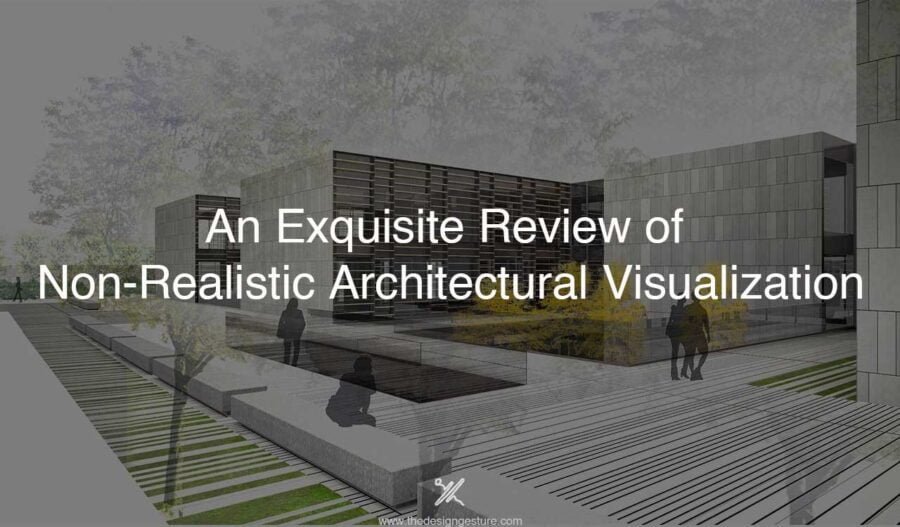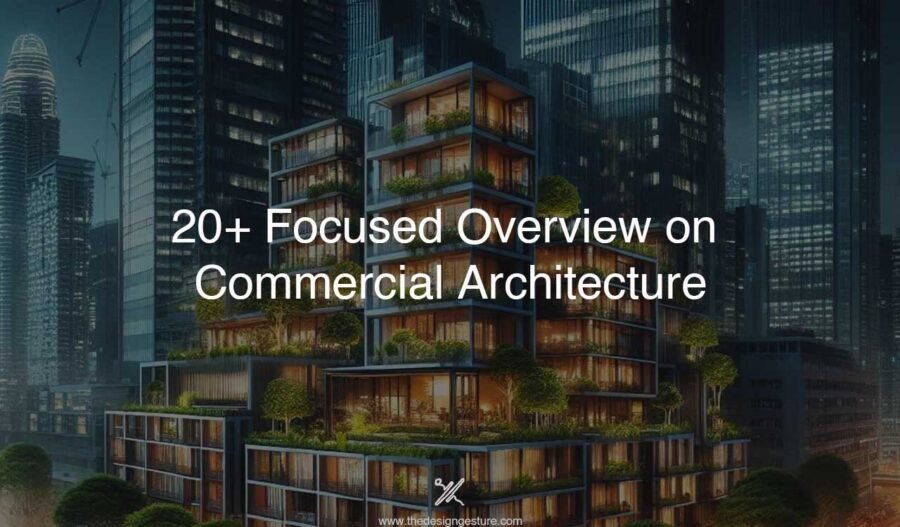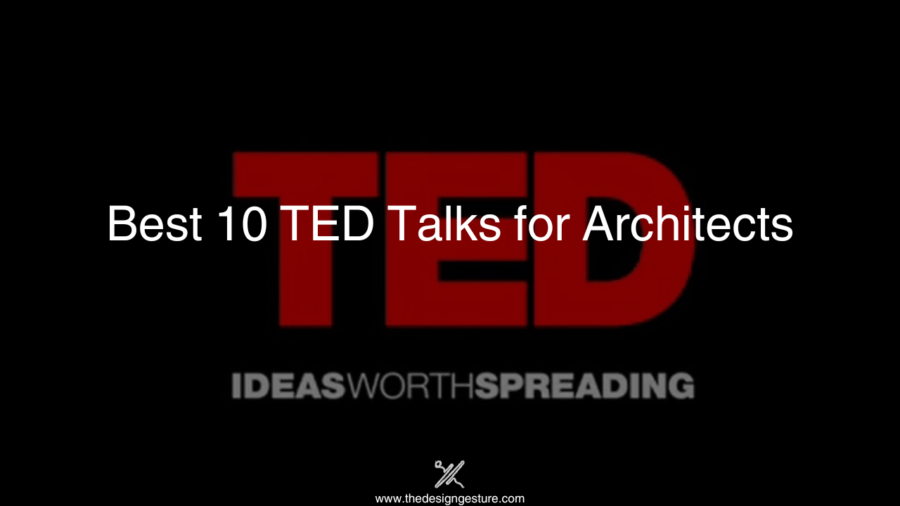Table of Contents
Introduction
Architectural visualization plays a significant role in the delivery and realization of a project, as it serves as a means for the communication of ideas. It is the 2-dimensional representation of a 3-dimensional design. There are several architectural visualization techniques, yet each one is distinctive from the other. The common architectural visualization technique is photo realistic rendering which showcases the anticipated real scenario. However non-realistic architectural visualization or non-photorealistic rendering (NPR) is an artistic rendering technique, unlike the conventional realistic visualization technique. Non-photorealistic rendering distances itself from reality and projects the designer’s idea.
Architectural Visualization: Photorealistic and Non-photorealistic Rendering
Photo realistic rendering intends to picturize the reality of an architectural piece as accurately as possible showing the design’s fine quality, real colors, and materials before its actual realization, to convince the clients. Advanced techniques such as ray tracing, global illumination, and post-processing to adjust reflections, shadows, textures, and materials are used to create images that look like photographs.
Non-photorealistic rendering is fairly conceptual, and imaginative and doesn’t mimic reality. It aims to express the architect’s thoughts and vision by creating a mood. Techniques such as collaging, stylization, abstraction, simplification, exaggeration, distortion, color grading, and filters are used to create non-photorealistic images that evoke emotions. This style of rendering intends to explore the artistic limits of architecture and unlock the full potential of the designer and his profession, fundamentally rooted in creativity. Some of the styles are described briefly below.
Collage Renderings
Collage rendering is an image created on software like Photoshop and Indesign, by imposing entourage like humans and vegetation, textures, and materials on the digital render extracted from 3d modeling software. Usually, these renderings lack shadows and give a sort of subtle artistic feel.
Illustration Renderings
Completely eschewing realism, illustration renderings are produced on software such as Illustrator, Illustrator Draw, etc. This style is suitable mainly for landscape projects, however, the illustrator has to be cautious to not overdo the animated effect in humans and plants.
Digital 3d-model Renderings
Digital 3D-model Rendering is the most suited style for exterior axonometric views of buildings. To create this rendering, the textures are set similarly to model-making materials like wood, paper, etc in the 3D modeling software, so that the output is similar to a physical model. Further depth is added by post-production in software like Photoshop.
Mixed/Hybrid Renderings
This rendering style involves combining 2 or more rendering styles to create a desired effect. Usually, this rendering style is used to emphasize and differentiate the important design elements from the others. There are many ways to highlight a design element including adjusting its transparency, rendering in a different style than the background elements, etc. Graphics software like Photoshop and Indesign are used for such processes.
Perks of Non-Photorealistic Rendering
Non-photorealistic rendering (NPR), as discussed above, is an artistic depiction of architectural concepts, it is quite a creative language to communicate the artistic nuances born out of architectural freedom. NPR certainly respects the notion of “Art for Art’s sake” and enables the architect to express his thoughts by accentuating certain design elements while downplaying the mediocre elements. Further, non-photorealistic renders allow viewers to interact and ponder upon them, unlike realistic renders that already present a precise story. Hence, enabling creative interpretation by the audience, NPR improves engagement with the project.
In addition to letting creativity bloom, NPR is considered efficient in comparison to the time-consuming photorealistic rendering. This may lead to the misinterpretation that NPR is easier, but that is not the case. NPR also involves time, skill, and most importantly creativity and imagination which not everyone will possess, making it equally challenging.
Designers Popularizing NPR
While Non-Photorealistic Rendering is only popular among professionals, students, and in competitions, few architectural offices employ NPR and surpass the limits of creativity in architectural visualization. Some of these offices and their visualization styles are discussed below.
OFFICE Kersten Geers David Van Severen
Office: OFFICE Kersten Geers David Van Severen
Location in the world: Brussels, Belgium
Visualization Style: The firm creates digital collages and illustration renderings in a painterly style to showcase its projects. Usually, pastel colors dominate their visual language.
KOSMOS Architects
Office: KOSMOS Architects
Location: Zürich, Switzerland (Headquarters)
Visualization Style: Inspired by Mark Chagall, the multidisciplinary studio combines art and technology to produce illustration renderings based on naïve art and fauvism.
Fala Atelier
Office: Fala Atelier
Location: Portu, Portugal
Visualization Style: This firm uses a hybrid approach in rendering. Their illustration renderings are further enhanced by collaging.
OMMX
Office: OMMX
Location: London, Great Britain
Visualization Style: OMMX uses different styles including but not limited to illustration rendering, and hybrid rendering, for distinct projects.
Viar Estudio
Office: Viar Estudio
Location: Spain
Visualization Style: This firm uses different techniques to create a hybrid of illustration and collage renderings with digital axonometric or perspective images of the building.
Grau Architects
Office: Grau Architects
Location: Bratislava, Slovakia
Visualization Style: Grau architects present their projects using illustration rendering dominated by pastel colors. Additionally, their exploded plans are an ideal example of hybrid rendering.
Villainizing Photorealistic Rendering, Not really!
While Non-Photorealistic rendering has certain advantages, it has downsides too. Similarly, photo-realistic renderings also have a set of advantages and another set of disadvantages. So, it is not possible to entirely replace photo-realistic rendering techniques with NPR. While it is true that Non-photorealistic rendering is artistic, it doesn’t give a clear idea about the finished project, unlike photo-realistic renderings. They serve different purposes and have different needs. It is not fair to compare apples and oranges!
Conclusion
Choosing an architectural visualization style is based on the purpose, stage of the project, the target audience, and the design firm’s approach. While hyper-photorealistic rendering is suitable for marketing and sales, non-photorealistic rendering is appropriate for competitions and exhibitions where there is no lack of professionals. Clients and non-professionals may appreciate photo-realistic renderings over non-photorealistic renderings as they understand the former over the latter. Yet non-photorealistic rendering may come in handy during the early stages of the project where the minute details of the project are not negotiated. Analyzing the situation and understanding the advantages and disadvantages of different types of rendering before choosing the rendering style may help to decide wisely.




